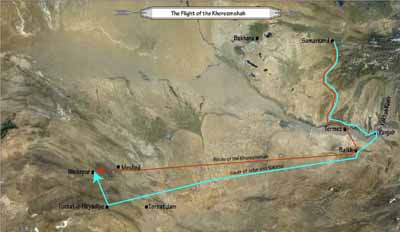Mongolia | Second of the Nine Nines | Khorz Arkhi Khöldönö | Sogdians

I mentioned earlier that the First of the Nine-Nines —the Nine-Nines being nine periods of nine days each, each period characterized by a certain type of winter weather—started on the day of the Winter Solstice , which occurred here in Mongolia on December 22. The Second of the Nine Nines began yesterday, December 31. Known as Khorz Arkhi Khöldönö , this is the time when twice-distilled homemade Mongolian arkhi (vodka) freezes. As you will recall, the first of the Nine-Nines was the time when regular, or once distilled, arkhi freezes. As this indicates, the second period should be colder than the first, since twice distilled arkhi obviously has a much higher alcohol content. This morning at 6:30, however, it was a balmy 1º above 0 F. (-17º C.) Expect colder weather by the end of the week. As some of you may know, today is also the first day of the year according to the admittedly outdated and outmoded Gregorian calendar which unfortunately seems to hold much of the world in its...



